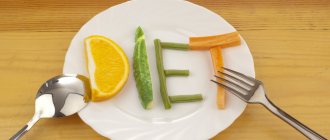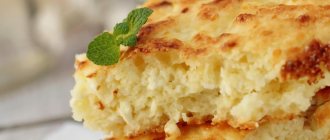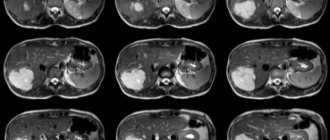For many centuries in a row, honey has been considered an indispensable healing substance for diseases. Modern traditional medicine shares this view. The product contains truly unique enzymes and active ingredients that are beneficial for a number of acute and chronic ailments. In addition to the undoubted medicinal properties, honey has amazing taste qualities. It is loved by many for its exquisite sweetness. The product is indispensable in cooking. There are recipes for preparing meat delicacies with the addition of a small amount of honey.
The question of whether it is allowed to use honey for pancreatitis is difficult to answer unequivocally. Some doctors categorically prohibit consuming the product with other sweets, even during the remission stage. Others, on the contrary, strongly recommend including the product in treatment regimens for the pancreas.
Pancreas
Conducted studies confirm that it is possible to consume delicacies for pancreatitis in extremely small quantities only in the stage of stable remission. A healthy pancreas does not like large amounts of carbohydrates. And with pancreatitis, excess sugar worsens health. The event is associated with a decrease in the functional activity of the diseased organ and the difficulty of breaking down disaccharides.
What you need to know about the pancreas
This organ is responsible for normal digestion and processing of substances. It consists of most exocrine glands - they produce enzymes necessary for digestion, which pass through the ducts into the intestines. The minority consists of endocrine glands of internal secretion. They have no ducts and secrete hormones directly into the blood. Hormones also include insulin, which is responsible for the processing and absorption of carbohydrates.
Answering the question whether honey is possible for pancreatitis or not, you need to know what kind of organ dysfunction is taking place. When the functioning of the endocrine gland is disrupted, diabetes mellitus develops due to a lack of insulin in the body. People with diabetes are not recommended to take honey to treat their pancreas. If pancreatitis is chronic and the functioning of the exocrine glands is impaired, then the api product can be consumed.
Interesting! Complex carbohydrates are pre-processed by enzymes, and only then insulin is used. Bee nectar is a simple carbohydrate, so the pancreas does not receive such an intense load.
Herbs and honey
Decoctions of medicinal plants are one of the components of therapy. Tea should be drunk 2-3 times a day for 14 days. In severe cases, therapy is extended to a month. The pharmacy sells a ready-made mixture that improves digestion, accelerates the flow of bile, and copes with the symptoms of pancreatitis. Fill the bag with hot water and leave for 5 minutes. Instead of sugar, add a spoonful of honey.
You can also prepare the herbal mixture yourself.
- Mix peppermint, motherwort, and St. John's wort in equal proportions. Pour hot water, leave under a closed lid for 40 minutes, take 100 ml three times a day along with honey.
- Elecampane rhizome, valerian, fenkel seeds, violet inflorescences. Mix the ingredients in approximately the same proportions. Pour boiling water over and boil in a water bath for 15 minutes. Allow to cool, strain, add 1 tbsp. A spoonful of honey. Take 100 ml three times a day.
- Yarrow, calendula, peppermint. The collection activates the outflow of bile and improves pancreatic function. Pour boiling water over and leave for half an hour. Add honey. Take 50 ml between meals.
There are special teas on sale based on medicinal herbs - Tea from Tibetan monks, Herbal tea for the pancreas, Phyto-Norma, etc. Just fill the contents with water and add honey to taste. To obtain a lasting therapeutic effect, teas are drunk constantly, but several infusions are alternated.
How does honey affect the pancreas?
Despite the possible danger, in certain cases the effect of honey on the pancreas is invaluable. Honey contains a huge amount of nutrients, amino acids, minerals, etc. It compensates for the lack of vitamins in the body, and also has the following effect:
- inhibits pathogenic microflora;
- strengthens the local immunity of the organ;
- has a weak laxative effect;
- prevents the development of bacterial infection in the affected organ;
- normalizes metabolic processes.
Treatment of the pancreas with bee products prevents relapses of the disease. Before starting apitherapy, you should take a blood sugar test. It is also worth monitoring your sugar levels before and after taking the sweet medicine for the first time. This will help rule out the presence of diabetes.
What types of honey are allowed?
When introducing bee products into your diet, it is important to remember their wide variety. It is recommended to purchase the product only from trusted suppliers who do not add sugar or other additional components to it. For pancreatitis, consider consuming the following types of honey:
- Buckwheat - the product has a dark brown color. It has pronounced anti-inflammatory and antiviral properties, has a detoxifying effect, accelerates the process of eliminating toxic substances, and facilitates the well-being of patients with ulcerative lesions of the stomach and duodenum.
- Chestnut - is a powerful antiseptic. Prescribed in complex therapy for patients with pathologies of the bronchopulmonary system, gastrointestinal tract, and urinary organs.
Patients with pancreatitis are advised to pay attention to a special type of honey - zabrusny. It is rich in lysozymes, which accelerate the regeneration process, reduces the activity of the inflammatory process, and restores the balance of pathogenic and conditionally pathogenic microflora. Contains wax honeycomb, rich in valuable vitamins and minerals. Reduces the severity of inflammatory reactions in pancreatitis, relieves symptoms, and improves the patient’s overall well-being.
Features of the use of nectar at various stages of the disease
The consumption of honey will vary depending on the period of illness and the presence of concomitant diseases.
At the acute stage of the disease
When the pancreas becomes inflamed, it swells, hurts, and stops functioning normally. In order to remove swelling, you need to relieve the gastrointestinal tract. During an exacerbation of the pancreas, a strict diet is introduced with a minimum amount of food for at least 3-7 days.
During this time, the organ is restored and becomes normal in size. Honey is contraindicated during exacerbation of pancreatitis. It is allowed to take bee nectar only 1 month after an exacerbation and only 90 days after acute pancreatitis.
In the chronic course of the disease
The chronic disease is characterized by periods of remission and relapses lasting more than 3 months. Eating honey for chronic pancreatitis is allowed if the gland produces a sufficient level of insulin, but the functioning of the exocrine glands is impaired.
The bee product increases the duration of remission, prevents inflammation, and normalizes the functioning of the digestive tract. It is recommended to use honey for pancreatitis of the pancreas during remission after consulting a specialist.
With simultaneous cholecystitis and pancreatitis
Many patients are interested in the question: is it possible to eat honey for pancreatitis and cholecystitis? In the chronic stage, bee nectar is very useful, it stimulates the functioning of the gallbladder and pancreas, improves the quality of bile, and reduces the likelihood of stones appearing in the gallbladder and its ducts.
Interesting! These two organs are very closely related. In more than 50% of people, the gallbladder and pancreatic ducts are connected before the point of contact with the intestines. And this is fraught with blockage of the common duct when the stone comes out. In this case, pancreatic enzymes begin to digest their own cells, which leads to tissue replacement and inflammation.
For liver problems
The liver is a kind of orderly for the body. It is very important to monitor her condition and, if necessary, take timely measures. Is honey good for the liver? Definitely yes! Honey is, to some extent, an elixir for the liver and pancreas.
In case of liver disease, it helps restore damaged cells, removes toxins, and prevents inflammatory processes. It is also important to know which honey is good for the liver. The priority is buckwheat, meadow, and dandelion honey.
About the disease
Pancreatitis in medicine refers to a group of diseases and syndromes that are accompanied by an inflammatory process in the pancreas. This organ is the main gland of the digestive tract and secretes enzymes that break down proteins, fats, carbohydrates, and nucleic acids.
Normally, enzymes from the pancreas are released into the duodenum, where they participate in the breakdown of food. However, during inflammation, these substances are activated in the organ itself and corrode it from the inside. In this case, some of the active substances, along with the bloodstream, enter others - the liver, kidneys, heart - causing disruption of their functions, for example gastritis.
Pancreatitis can occur in acute and chronic forms. More than 2/3 of cases are associated with alcohol abuse. In 20% of cases it is a complication of cholelithiasis. In addition, the causes of pathology can be:
- severe poisoning;
- viral and bacterial infections;
- parasites;
- injuries and complications after surgical interventions.
During an attack of the disease, the patient experiences sharp pain in the upper abdomen. Vomiting begins with an admixture of bile. The skin turns yellow and the urine becomes dark.
Preferred variety of apiproduct
Physicians recommend including linden honey in your diet; acacia, buckwheat, and dandelion nectar are also suitable. Separately, it is worth highlighting raw honey. It contains wax, pollen particles and beebread. It is he who is considered most useful in the treatment of the pancreas.
Zabrus inhibits pathogenic microorganisms, improves blood composition, strengthens the immune system, and eliminates inflammation.
Recipes for honey treatment of pancreatitis
Sweet treatment of pancreatitis begins only when it is possible to achieve a state of stable remission. In all other cases, the consumption of foods containing sugar is strictly prohibited. If the symptoms of the disease have subsided and the person feels well, then the following recipes can be used:
- Mix 1 tablespoon of honey and 10 drops of flaxseed oil (if necessary, the oil can be replaced with any other vegetable oil, but preference is still given to flaxseed oil), take 1 teaspoon on an empty stomach.
- Dissolve a dessert spoon of bee product in a glass of warm milk. Drink on an empty stomach. During this treatment, you should remember that after taking healing honey milk you should abstain from food for 4 hours.
- Mix honey with aloe juice in a 1:1 ratio. Take no more than 1 tablespoon per day before meals.
So, honey is extremely useful, it has a general strengthening effect on the body, but its use should be approached with caution. The acute period of pancreatitis absolutely excludes the consumption of any sweets, including bee products. However, having achieved stable remission and after consulting with your doctor, you can include this natural medicine in your diet.
Folk recipes
In folk medicine, various recipes based on bee products have accumulated for the treatment of pancreatitis.
Honey water
Water with nectar has a good effect on the gland. For 200 ml of warm water you need to add 1 tsp. bee delicacy. Drink 30 minutes before meals three times a day for 2-4 weeks.
With aloe juice
Aloe juice with honey for pancreatitis will relieve the patient from bloating and increased gas formation. The drug has a calming effect on the mucous membrane of the digestive tract and improves digestion. It is necessary to mix bee product and medicinal plant juice in equal proportions.
The finished mixture is stored in the refrigerator for no longer than 7 days. Take 1 tsp. 3 times a day, dissolving in the mouth. The course of apitherapy is 30–60 days.
With milk
Milk with honey corrects metabolic processes, prevents inflammatory processes, and has an enveloping and soothing effect. It is necessary to boil the milk, then cool to 40 degrees.
Stir 1 tsp in a glass of warm drink, drink after waking up 40 minutes before breakfast and before bed. This remedy reduces the likelihood of constipation.
With kefir
Kefir and honey are very useful for the pancreas. The drink eliminates discomfort after eating, heartburn and bloating go away. The fermented milk product has a beneficial effect on microflora, saturates the body with calcium, and improves the absorption of nutrients in the intestines.
You need to choose kefir with a reduced fat content. Add 1 tsp to a glass of kefir at room temperature. nectar, then mix well. For the first dose you need to drink no more than 50 grams. mixtures. This will allow you to see the reaction of the gastrointestinal tract to the product. With normal tolerance, the volume is subsequently increased to 100 g. appointment. Drink kefir drink 2-3 times a day 30 minutes before meals.
With oatmeal broth
Oat decoction is a wonderful remedy for nausea, heartburn, and belching. It has an anti-inflammatory effect, improves the digestion process, and does not burden the organs. For cooking, use whole oats, preferably unrefined grains with husks. The grain is washed, filled with water at the rate of 1/5, and put on fire.
After boiling, reduce the heat and simmer for a quarter of an hour. Then the mass must be placed in a thermos and left for 12 hours, after which the mixture is filtered. Add bee treat (1 tsp per 200 ml) and mix thoroughly.
Drink 100 ml of medication half an hour before meals. The drink should be at room temperature, but should be stored in the refrigerator for no longer than 3 days.
With Manchurian nuts
Tincture of Manchurian nut with honey helps lower blood sugar levels, has a tonic effect, and reduces the risk of pancreatic cancer. To prepare the medicine, unripe green nuts are taken and each nut is finely chopped.
Mix nectar and nuts in equal proportions in a container, then close it tightly and put it in a dark place for 3 months. After this time, the resulting syrup is filtered and the nuts are thrown away. They gave all the beneficial properties to the apiproduct.
The medicine is taken 1 tsp. 2-3 times 20 minutes before meals for a month.
With pumpkin oil
Pumpkin oil with the addition of honey for pancreatitis restores digestive functions and reduces stomach acidity. Pumpkin oil and nectar are mixed 1 to 1, drink 1 tsp in the morning. The course of treatment is 2 weeks. Pumpkin has choleretic properties, so this mixture will be useful for chronic cholecystitis, as well as for liver diseases.
Cinnamon
The aromatic spice has a beneficial effect on the digestive tract, activates the production of enzymes, and reduces the risk of developing diabetes mellitus with pancreatitis. Cinnamon is mixed with bee products in equal quantities. Drink 0.5 tsp. twice a day for 7–14 days. Such treatment is allowed only in the stage of stable remission.
With onion
Onions stimulate the production of pancreatic juice, so they are used only in the chronic stage of the disease. For treatment, the onion is finely chopped, blanched (this will reduce the aggressiveness of the product for the pancreas) and combined with sweetness 1 to 1. Take 0.5-1 tsp twice a day. during the week.
Medicinal properties and effects of honey
This product is widely used in dietetics and other areas of medicine. Most of honey is carbohydrates, which makes it high in calories. Therefore, in order to prevent the development of various complications, it is recommended to eat it in small quantities. The presence of pathology of the digestive tract may be a contraindication to taking this drug.
Honey contains many substances beneficial to the body.
In cases where the patient consumes honey and honey water, according to the recommendations of doctors, this product will have the following positive properties:
- antibacterial effect, suppression of the growth of pathogenic microbes, prevention of the development of bacterial inflammation in tissues;
- strengthening immunity and defenses;
- stimulation of the functioning of the gastrointestinal tract;
- reducing the risk of developing cancer pathology, both of the pancreas and other organs;
- reducing the concentration of toxic substances in the blood;
- saturating the body with essential nutrients, vitamins and microelements.
Honey contains a large amount of carbohydrates with a simple structure (glucose, fructose). Pancreatic enzymes are not used to break them down. This means that the use of the product does not lead to increased activity of this organ, and therefore cannot provoke an exacerbation.
In most cases, buckwheat honey can be consumed for pancreatitis and other pathologies of the digestive system in the absence of signs of acute inflammation. Therefore, it is not recommended to add this product to your diet on your own. It is better to first undergo an examination by your attending physician, who can assess the functional state of the pancreas and identify the presence of other diseases.
In addition to the above-mentioned positive effect of this beekeeping product on the digestive system and the body as a whole, if used incorrectly, it can also lead to undesirable results. This is due to the following:
- Simple carbohydrates contained in honey increase blood glucose concentrations and lead to hyperglycemia. To prevent the development of this condition, the pancreas normally releases the hormone insulin into the blood. Without proper treatment for drug-induced pancreatitis or inflammation of another nature, the endocrine function of the organ is significantly reduced. This means that consuming honey in the acute phase of the disease can cause the development of pathologies such as diabetes;
- Honey can cause allergic reactions in patients. Therefore, this product is contraindicated for people prone to such conditions.
Since the use of this product can lead to the development of undesirable reactions, only the attending physician should determine whether honey is suitable for pancreatitis. Let's consider in what cases it is allowed to add it to the diet.
The medicinal properties of honey are very diverse. Honey helps to normalize the functioning of all internal human organs, while being an excellent preventive remedy used for a large number of diseases.
Honey has antihistamine, antibacterial, immunostimulating, antiviral, antifungal, choleretic, regenerating, antidepressant, anticonvulsant, and restorative effects on the affected body.
Compared to sugar, honey has a large set of vitamins, can reduce the acidity of the gastric environment, and stimulate brain activity. In addition, the product is capable of:
- have an anti-inflammatory effect that has a beneficial effect on the gastrointestinal tract;
- act as a good antiseptic that heals the mucous membrane;
- strengthen the immune system;
- prevent the occurrence of malignant tumors;
- increase resistance to harmful microorganisms as an antibacterial agent;
- have a laxative effect for constipation.
Whether it is possible to eat honey if you have pancreatitis of the pancreas depends entirely on the stage of the disease, as discussed above.
Who is contraindicated for apitherapy?
Every patient should understand that there are possible benefits and harms of honey for the pancreas. In order to avoid unpleasant consequences, you should consume the bee delicacy in doses. And only during the period of remission. Otherwise, when the organ becomes inflamed, the nectar will provoke the release of a larger volume of enzymes, which will increase the swelling and begin to destroy the gland itself.
Remember that before starting therapy you need to make sure there is no hidden diabetes mellitus. And, of course, do not forget that bee nectar is an allergen. Therefore, this method of treatment is not suitable for people with individual intolerance.
Why is honey dangerous for pancreatitis?
During honey therapy, an allergic reaction may develop. It manifests itself in the form of skin rashes, redness, and itching. The situation arises when there is an individual intolerance to the components of honey or a tendency to allergies. In addition to external manifestations, an increase in unpleasant symptoms, nausea, and diarrhea may be observed.
The intake of easily digestible carbohydrates stimulates the production of insulin and activation of the pancreas, which increases the risk of developing diabetes. It is strictly forbidden to eat the product if you already have an illness.
Diet of a patient with cholecystitis and pancreatitis
In order for remission to last as long as possible, it is important to carefully monitor your diet. All products for pancreatitis should be chosen with reduced fat content. Dishes are steamed, stewed or boiled. All spicy, sour and fatty foods are excluded from the diet.
At the same time, it is important to monitor the richness of the dishes; they must fully provide the body with all the necessary substances. Such nutrition will reduce the load on the digestive system, optimize the production of bile and enzymes, and ensure good health.
Which to choose?
With a disease such as pancreatitis, people should take a closer look at dark varieties of natural sweets. Dark varieties contain fewer vitamins than light varieties, but they contain more microelements (manganese, magnesium, potassium and phosphorus), which help cope with digestive tract problems.
Chestnut, hyssop or forest polyfloral honey (collected from several types of flowering plants and shrubs) are the varieties you can choose for pancreatitis. But the cast-iron product is considered healthier.
Is it possible to cure pancreas (pancreatitis) forever? Read more about this in the article.
Useful tips
When purchasing sweets, you should pay attention to the following recommendations:
- The liquid consistency of honey in mid-winter and early spring does not always serve as an indicator of quality, because Some manufacturers begin to heat the hardened product, heating it more than +40°C, as a result, most of the beneficial substances are lost.
- Ripe sweets can be wound around a spoon with a continuous thread, while unripe or diluted with water will drain easily.
- Honey begins to crystallize in the fall. To distinguish natural crystals from sugar crystals added by sellers, you need to take a closer look at them. Sugar crystals will be large and rough in taste, and it is not recommended to purchase such a product.
- Fermented or unripe sweets may foam.
- Good honey should not separate.
It is better to buy a bee product not in a store, but from trusted sellers, in which case it will be fresh and natural and will have a positive effect on the body.
What is raw honey and how to use it?
When the bees fill the honeycombs with the ripened sticky substance, they seal the cells with wax caps. Before pumping out the honey, beekeepers remove these caps with a bee knife. Signets cut off with the remnants of sweets are called zabrus. It has a high concentration of useful components, contains propolis and royal jelly. Thanks to these substances, the product treats various gastrointestinal diseases, including pancreatitis.
Zabrusny honey is used after meals 2-3 times a day. 1 tbsp. l. The product is chewed for 5 minutes, during which the bark breaks up into small pieces. Then it is spat out, less often swallowed. In the latter case, it protects the walls of the stomach from the harmful effects of acid, which is important for ulcers and pancreatitis. Strawberry honey enhances intestinal motility, so it is better to swallow it if you have constipation. Useful signets can relieve pain from pancreatitis after the first use.
Strawberry honey enhances intestinal motility, so it is better to swallow it if you have constipation.
They have no contraindications, and only those people who are allergic to wax should not chew them.
Precautions and rules of use
Any overeating, even if it is a superfood, is extremely harmful:
- Increased consumption of carbohydrates will provoke increased secretion of insulin and the risk of diabetes.
- Honey can cause allergies in a certain category of people. It is characterized by skin rash, red spots, unbearable itching, fever, headache, unmotivated fatigue, diarrhea, red eyes, anaphylactic shock. Even for a relatively healthy person, these symptoms pose a serious threat. The addition of an allergic reaction to existing pancreatitis will most likely require urgent hospitalization.
- In addition, you should not eat honey if you have erosion of the gastric mucosa and if your body temperature exceeds 39°C.
Therefore, especially if you have problems with your pancreas, eat no more than 150 g of honey per day. You can begin medical treatment for pancreatitis already at the stage of reducing the symptoms of inflammation, but only if you tolerate bee products well.
https://youtu.be/Fh6WzHvdlbc
Reviews
“I have had a disease of the pancreas for a long time, and as you know, you can’t eat sweets, because it can cause discomfort and also contribute to aggravation. When I learned that you can use honey in food, I was a little surprised at first, since it is also sweet. But the doctor told me that it can be consumed in small quantities. I advised you to eat it on an empty stomach 30 minutes before meals, 1 teaspoon, or use it as a drink (dilute in water). After daily use, my health improved, intestinal function improved, and acidity disappeared” - Marina, Ulan-Ude.
"I have the same problem. Very often I suffered from stomach pain and constant heaviness, as well as bloating. I decided that the best way for myself to reduce these unpleasant symptoms was to take 1 glass of sea buckthorn oil, 1 spoon of propolis milk with the addition of a spoon of honey. It helps me, I take 2 spoons before eating food” - Maxim, Krasnoyarsk.
“I use honey diluted in boiled water, but it should not be hot. I take one glass of this sweet water an hour before meals in the morning and evening. 1 tsp. for 1 tbsp. water" – Violetta, Ufa.
Useful Features
The sweet, thick substance is filled with glucose and fructose. Pancreatic enzymes are not required to break down these elements in the intestinal area. Pancreatic secretion will be absent, which allows you to enjoy sweets when the gland is inflamed.
Honey also has the following beneficial properties:
- Antibacterial and antiseptic characteristics.
- Anti-inflammatory effects.
- Strengthening the immune system, which helps restore good health and speed up the healing process.
- It has a laxative effect, which helps get rid of problems with stool.











